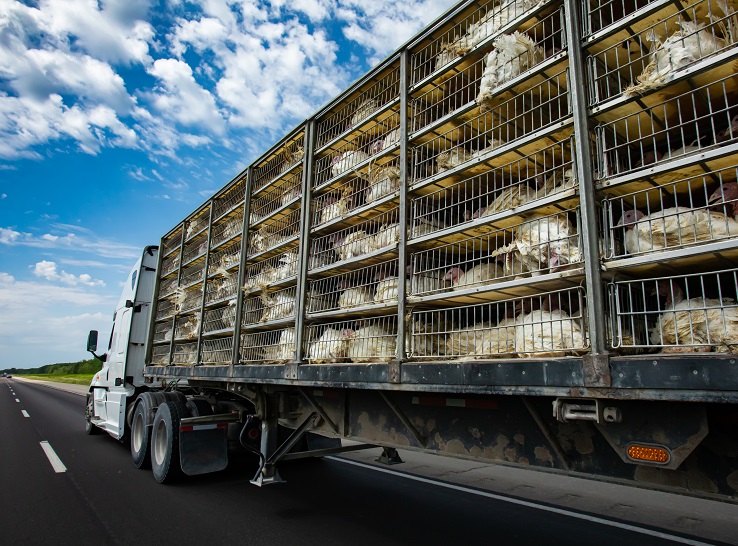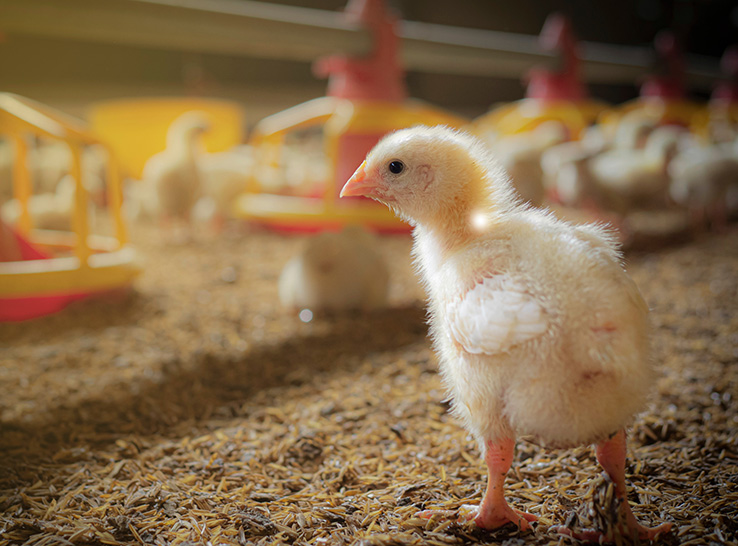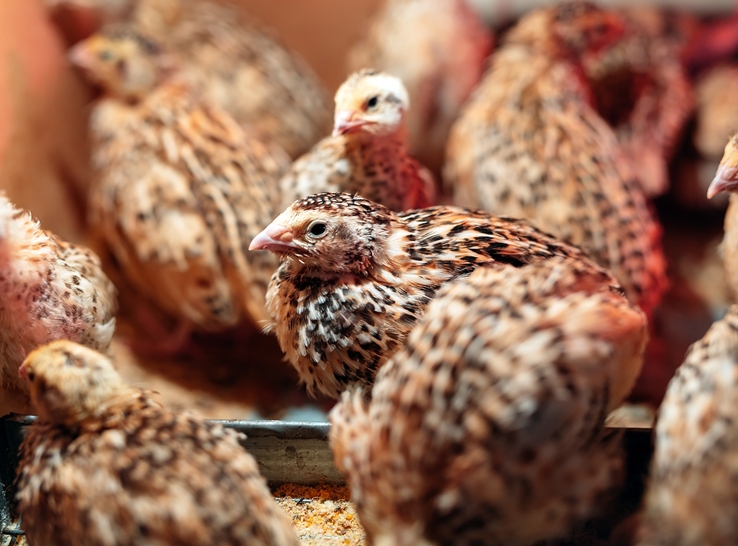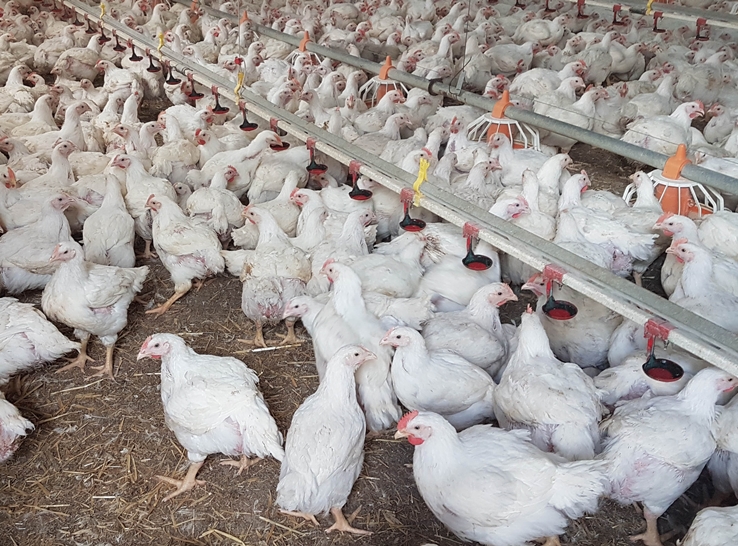By Bethany Baker-Cook, PhD, Auburn University
What is litter?
Litter and its management are an essential part of bird management and ensuring bird welfare. This goes for broilers, turkeys or laying hens kept on litter floors. Litter is a combination of the bedding used within a house combined with the excreta from the birds. Good quality litter provides birds with a comfortable place to rest and perform natural behaviors. Litter has multiple functions, including absorbing excess moisture from excreta and the environment, diluting fecal material, reducing bird contact with the feces, neutralizing unwanted microbial activity, and keeping chicks warm by insulating them from the cold ground, and facilitates the performance of highly motivated behaviors such as foraging and dustbathing. Generally, litter should be about 5-10 cm or 2-4 inches in depth. However, if the bedding has poor water absorbency, more bedding will be needed (a minimum of 8 cm or 3 in).
Why is litter management critical?
It is important to manage the litter properly throughout the production cycle, as litter that is too wet or too dry can negatively impact bird welfare, health, and performance. The ideal moisture content in litter is around 20-25%. An easy way to estimate moisture content is to squeeze a handful of litter in your hand. If the litter is too wet, the litter will adhere and remain in a ball. If it is too dry, it will not adhere at all. If the moisture content is correct, the litter will adhere slightly.
Dry litter occurs when there is not sufficient moisture within the litter. If litter moisture content is below 20%, then it can be too dusty (this can also be impacted by particle size), leading to health problems in birds and workers. It can lead to the dehydration of chicks and poults, various respiratory diseases, and condemnations at the processing plant.
Wet litter occurs when there is excessive moisture within the litter, and the litter substance can no longer absorb all the moisture that is being added. Wet litter leads to welfare issues for birds. It can lead to contact dermatitis (an inflammation of the skin that can lead to lesions), high ammonia levels with subsequent respiratory and health problems, and an increased microbiological load in the litter, exposing the birds to parasites, bacteria, and enteric viruses. Furthermore, wet litter can decrease production and an increase downgrades or condemnations at the processing plant.
The impacts of wet litter
High ammonia levels in the house pose a risk for animal welfare. Ammonia irritates the eyes and respiratory tract, and at as little as 25 ppm, it can impact respiratory and ocular health, and depress growth. If birds are exposed to high concentrations of ammonia for a prolonged time, it can cause blindness (via keratoconjunctivitis). It can also create lesions within the respiratory tract and cause paralysis, necrosis (cell death), or complete loss of cells within the trachea. This makes birds vulnerable to diseases like airsacculitis and other viral infections. Ammonia can be detected by humans at concentrations >5 ppm, however repeated exposure can reduce human sensitivity to ammonia. This may lead to people underestimating the concentration of ammonia within the house.
High ammonia concentrations within the litter and high litter moisture cause contact dermatitis. Contact dermatitis occurs when the skin has prolonged contact with wet or caustic (tissue corroding) litter. Severe contact dermatitis lesions can cause pain. The pain from these lesions can lead to lameness and mobility issues that can prevent bird’s from accessing important resources, like food and water. It also increases susceptibility to other infections. Common forms of contact dermatitis are foot pad dermatitis (for more information read newsletter on footpad dermatitis – Vol 9 https://www.canva.com/design/DAEOE7CvsVo/view), hock burn, and breast blisters. Hock burn is when lesions occur on the hocks of the birds, while breast blisters occur on the breast of the bird, particularly the area that is in contact with the litter.
Where does litter moisture come from?
Moisture control is key to good litter management. To do this, it is important to understand that several factors contribute to wet litter and need to be considered. These include the house environment, drinker management, flock health and disease, and the properties of bedding materials used.
One of the primary sources of moisture within a house is from the birds themselves. When birds consume water, only 20% of that water is maintained within the body. The other 80% is expelled into the environment via feces or expired air. It has been estimated that a 20,000-bird flock can add 3.2L/m2 of water to the litter per day (Collet, 2012). All this moisture needs to be absorbed by the litter or evaporated using heat and ventilation. Over an entire flock, much more moisture is expelled by birds than the litter can hold. So, management is critical in addressing this.
Using ventilation to manage litter
Ventilation is the most essential tool to manage litter. The movement of air and the introduction of fresh air into the house can remove moisture from the litter and eliminate gases such as CO2 and ammonia. It is essential to increase ventilation as birds age to allow excess water to be removed from the litter. Keeping a uniform bird density throughout the house also helps control moisture, as it prevents the occurrence of wet patches that are difficult to resolve. If the ventilation is inadequate, caking can occur. Caking is when the litter clumps together, trapping moisture and ammonia underneath the litter surface. This can make it hard to remove the moisture with ventilation. Caking increases the risk of contact dermatitis and reduces the birds’ ability to dustbathe and forage.
The ability to ventilate is impacted by temperature. At low temperatures, the water-holding capacity of air is reduced, reducing the effectiveness of ventilation. This can make ventilation management more difficult during the winter. Adding heat can help remove moisture from the house. However, in the summer months, if the temperature and the humidity are high, the air can become saturated with water and cannot remove moisture as successfully. It is also important to note that the use of evaporative cooling in barns via cool cells or misters will increase the humidity in the barn and increase the moisture in the litter.
Drinker system management to prevent wet litter
Another area that needs to be well managed is the drinker systems. Water line breaks, un-level water lines, and damaged or worn nipples can all create leaks that will lead to excess moisture in the litter. So, it is important to monitor and repair the water systems to prevent leaks from occurring. Furthermore, the height and water pressure of the drinker systems need to be adjusted with the birds as they grow to prevent spillage. Water quality and sanitation should also be managed, as water that contains many particles or creates a film within the drinker will lead to the nipples leaking. Drinker type can also impact litter moisture level. An open water system, such as bell drinkers or troughs, can result in wetter litter, as there can be more splashing from these drinkers than from a nipple drinker. Furthermore, there may also be evaporation from these drinker types.
Litter and different bedding types
The type of bedding material used can also greatly impact the litter quality. The bedding type used will be dependent on geographical location; it needs to be readily available and inexpensive and is often an agricultural by-product. The ideal bedding material should be able to absorb and release moisture easily. Preferably, it has a smaller particle size, as this allows for more absorption and release of moisture and reduces the likelihood of caking. Great bedding material is friable, as this helps it to keep dry and allows birds to aerate the litter while they are dust bathing, foraging, and scratching at the litter.
Several bedding types are commonly used, all differing in their moisture-holding capacity. A few examples are pine shavings, sawdust, rice hulls, sand, peat moss, wheat or flax straw, sunflower and peanut shells, paper by-products, and chopped maize silage or chopped corn cobs. Each of these has its benefits and drawbacks, and there is much ongoing research looking at how different bedding materials impact litter moisture content, as well as bird production and welfare.
To ensure good litter, you need to have a suitable bedding material, good ventilation (to get rid of moisture and ammonia), good drinker management (to prevent spillage), good nutrition, and ensure that the litter is maintained by removing caked areas and aerating when required.
Short Summary
Litter management is crucial for bird welfare. Litter that is too wet or too dry can result in issues such as contact dermatitis, respiratory disease, eye health issues, and reduced production. It is important to manage the moisture content in the litter. This can be done by having a suitable bedding material, good ventilation, good drinker management, and maintaining the litter by removing caked areas and aerating.
References
Brink, M., G. Janssens, P. Demeyer, Ö. Bağci, and E. Delezie. 2022. Ammonia concentrations, litter quality, performance and some welfare parameters of broilers kept on different bedding materials. British Poultry Science. 63(6):768-778.
Collet, S. 2012. Nutrition and wet litter problems in poultry. Animal feed Science and Technology. 172(1-2):65-75.
Dunlop, M., A. Moss, P. Groves, S. Wilkinson, R. Stuetz, and P. Selle. 2016. The multidimensional causal factors of ‘wet litter’ in chicken-meat production. Science of the total environment. 562:766-776.
To view the full Poultry Extension Collaborative newsletter, Vol 49, click here.
Editor’s note: Content on Modern Poultry’s Industry Insights pages is provided and/or commissioned by our sponsors, who assume full responsibility for its accuracy and compliance.







